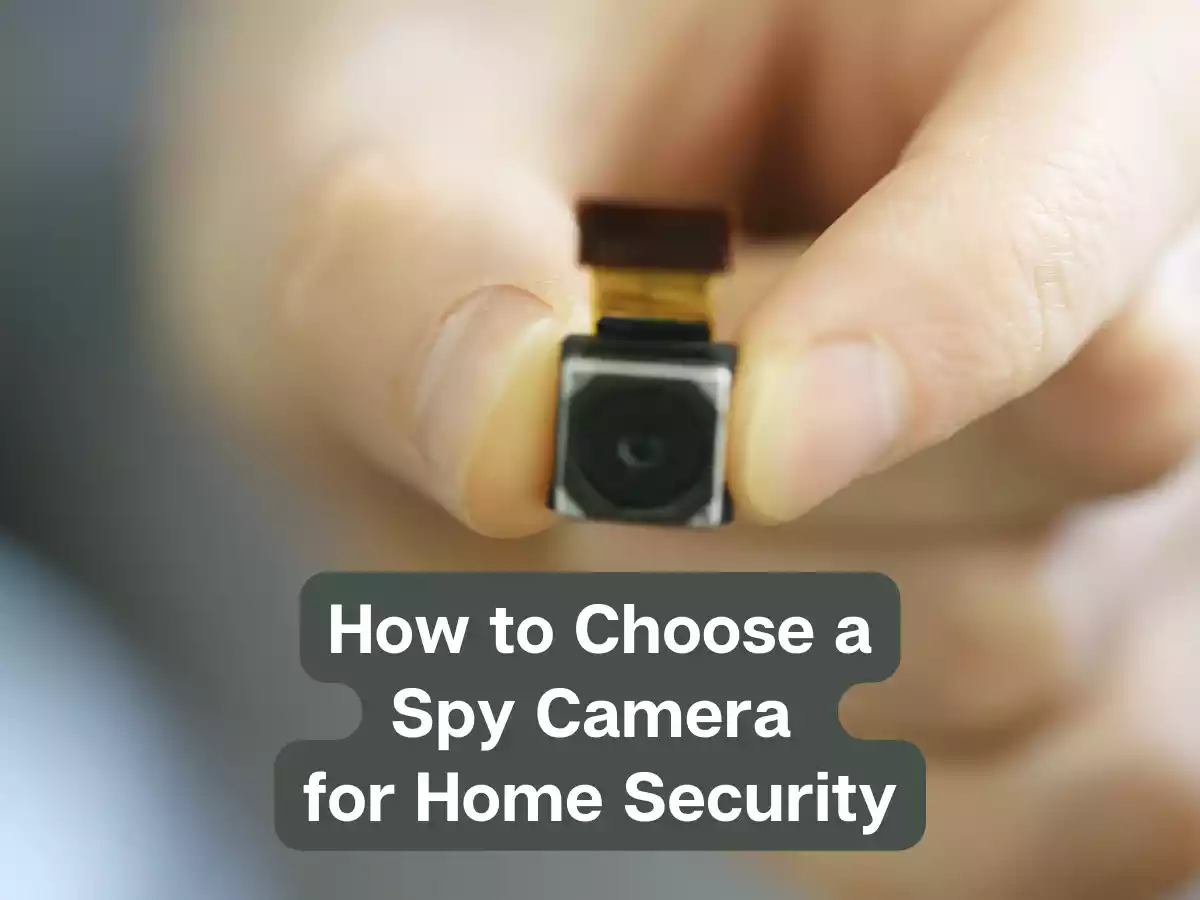Table of Contents
ToggleSpy Camera for Home Security
Home security is a top priority for many people, and with the advancement of technology, there are many options available for protecting your home. One popular tool for home security is spy cameras. These cameras can help you keep an eye on your home when you’re away or monitor activities within your home. However, with so many different types of spy cameras on the market, it can be overwhelming to choose the right one for your needs. In this blog post, we’ll discuss the different types of spy cameras available, important factors to consider when choosing one, legal considerations to keep in mind, and tips for installation and maintenance. By the end of this post, you’ll have a better understanding of how to choose a spy camera for your home security needs.
Types of Spy Cameras
When it comes to spy cameras for home security, there are several types to choose from. Here are the most common types of spy cameras available:
Hidden Cameras
These cameras are designed to be hidden within everyday objects such as clocks, picture frames, or even electrical outlets. They’re often used for hidden surveillance and can be a great option if you want to monitor your home cleverly.
Nanny Cameras
Nanny cameras are specifically designed for parents who want to monitor their children’s activities while they’re away. These cameras are usually hidden within stuffed animals, toys, or other child-friendly objects, making them less noticeable.
Wi-Fi Spy Cameras
Wi-Fi spy cameras connect to your home’s Wi-Fi network and allow you to view the camera feed remotely through an app on your smartphone or computer. These cameras can be placed anywhere within range of your Wi-Fi signal and are ideal for monitoring your home while you’re away.
Body-Worn Cameras
Body-worn cameras can be worn on your person or attached to your clothing. They’re often used by law enforcement officers or private investigators, but they can also be used for personal security purposes.
When choosing a spy camera, consider which type will work best for your specific needs. Hidden cameras and nanny cameras are ideal for hidden surveillance, while Wi-Fi cameras and body-worn cameras are better for monitoring your home remotely or on-the-go.
Factors to Consider When Choosing a Spy Camera
When choosing a spy camera for home security, there are several factors you should consider. Here are some of the most important ones:
Purpose
Determine the purpose of the camera and what you want to achieve with it. Do you want to monitor your home while you’re away, keep an eye on a caretaker, or watch over your pets? Knowing the purpose of the camera will help you choose the right type of camera for your needs.
Budget
Determine your budget for the camera and consider the features that are most important to you. Keep in mind that higher-end cameras tend to have better video quality and more features, but also come with a higher price tag.
Location
Consider the location where you want to place the camera and make sure it’s suitable for the type of camera you choose. For example, a hidden camera may be more appropriate for certain areas of your home than a body-worn camera.
Privacy Concerns
Consider the privacy concerns of the people who will be in the camera’s view, and make sure you’re adhering to any applicable laws or regulations regarding surveillance.
Video Quality
Choose a camera with a high enough resolution to capture clear images, especially if you need to identify people or objects in the footage.
Field of View
Consider the field of view of the camera and make sure it covers the areas you want to monitor.
Motion Detection
Motion detection can help save storage space and make it easier to review footage.
Night Vision
If you want to monitor your home at night, choose a camera with night vision capabilities.
Storage
Consider how much storage the camera has and whether it can be expanded with an SD card or other external storage device.
Power Source
Choose a camera with a power source that works best for your needs, such as battery-powered or plugged into an outlet.
Audio Recording
Some hidden cameras come with audio recording capabilities.
Connectivity
Some hidden cameras can connect to your home’s Wi-Fi network, allowing you to view the footage remotely through an app on your smartphone or computer.
By considering these factors, you’ll be able to choose the best spy camera for your home security needs.
Legal Considerations
When choosing a spy camera for home security, it’s important to consider the legal implications of using such a device. Here are some legal considerations to keep in mind:
Privacy Laws
It’s important to be aware of the privacy laws in your area regarding surveillance. In some places, it may be illegal to record audio without consent, while in others it may be illegal to record video in certain areas, such as bedrooms or bathrooms. Make sure you’re adhering to any applicable laws or regulations.
Consent
If you’re monitoring an area where people have a reasonable expectation of privacy, such as a bedroom or bathroom, you may need to obtain consent from anyone who will be in the camera’s view.
Disclosure
It’s a good idea to disclose the presence of any spy cameras in your home to anyone who will be in the camera’s view, such as house guests or caretakers.
Unauthorized Recording
It’s illegal to record conversations without the consent of all parties involved, and doing so could result in legal consequences.
Audio Recording
Be aware that some states have “two-party consent” laws, which require all parties involved in a conversation to give consent to be recorded.
By being aware of the legal considerations of using a spy camera for home security, you can ensure that you’re using the device in a legal and ethical manner. If you have any questions or concerns about the legality of using a spy camera, it’s always best to consult with a legal professional.
Installation and Maintenance
Installing and maintaining a spy camera for home security requires some effort and attention to detail. Here are some tips to ensure proper installation and maintenance:
- Choose a location that provides the best view of the area you want to monitor, while still being discreet and out of reach of potential intruders.
- Test the camera to make sure it’s properly installed and is capturing the footage you need.
- Make sure you have a reliable power source for the camera, whether it’s battery-powered or plugged into an outlet.
- Regularly clean the camera lens to ensure clear footage.
- Make sure to check the storage on the camera regularly to ensure it’s not full and is still recording footage.
- If your camera is connected to your home’s Wi-Fi network, make sure to periodically check the connection to ensure it’s still functioning properly.
- Review the footage regularly to ensure that the camera is capturing the footage you need and that there are no technical issues with the camera.
- Keep the camera’s firmware up-to-date to ensure it’s operating at peak performance and to avoid any security vulnerabilities.
By following these tips, you can ensure that your spy camera is properly installed and maintained for optimal home security.
Conclusion
Choosing a spy camera for home security can be a valuable investment in protecting your property and loved ones. By considering factors such as purpose, budget, location, and privacy concerns, you can choose the right type of camera for your needs. It’s also important to keep legal considerations in mind, such as privacy laws and consent requirements. Once you’ve chosen and installed the camera, it’s essential to regularly maintain and review the footage to ensure optimal performance. With these considerations in mind, you can select and use a spy camera for home security with confidence and peace of mind.




